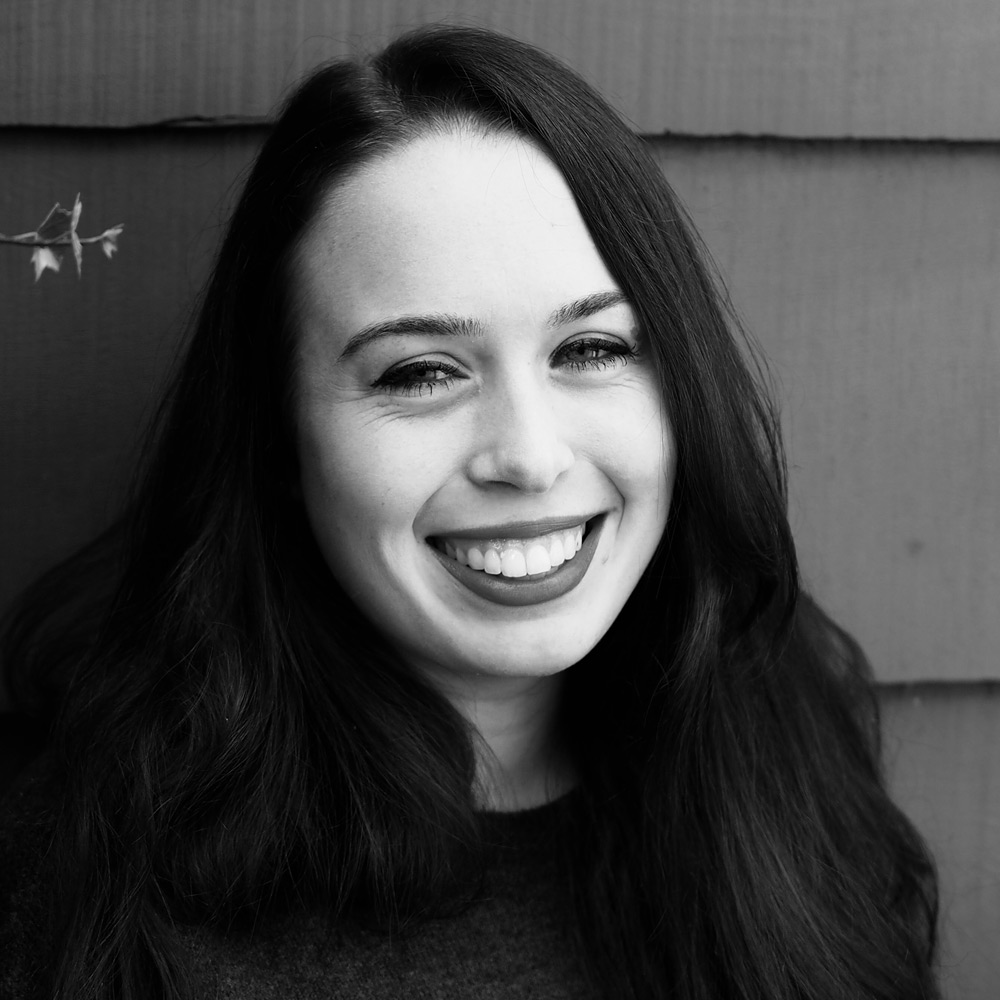Dr Alasdair Clarke

-
Email
a.clarke@essex.ac.uk -
Location
2.719, Colchester Campus
Profile
Biography
Alasdair Clarke has a background in mathematics (M.Math, University of Warwick) and a PhD in Computer Science (Heriot-Watt University). After his Phd, he worked as a post-doc at the School of Informatics, University of Edinburgh, and then at the School of Psychology, University of Aberdeen. His current research interests cover visual perception, search, and decision making.
Qualifications
-
PhD Heriot-Watt University,
-
M.Sc Edinburgh Napier University,
-
MMath University of Warwick,
Appointments
University of Essex
-
Lecturer, Psychology, University of Essex (1/12/2016 - present)
Teaching and supervision
Current teaching responsibilities
-
Understanding Our Place in the World (PS101)
-
Growing in the World (PS102)
-
Experiencing Emotion (PS103)
-
Thinking and the Mind (PS104)
-
The Social World (PS105)
-
The Social Brain (PS106)
-
Statistical Models for Psychology (PS422)
-
The science of uncertainty (PS509)
-
Special Topics in Individual Differences and Developmental Psychology (PS938)
-
Advanced Statistics for Research (PS947)
Current supervision
Previous supervision

Degree subject: Psychology
Degree type: Doctor of Philosophy
Awarded date: 1/7/2021
Publications
Publications (5)
Clarke, ADF. and Elsner, M., (2024). Technical report on multiple signal detection: analysis of simulated datasets
Efthimiou, TN., Baker, J., Clarke, ADF., Elsenaar, A., Mehu, M. and Korb, S., (2023). Zygomaticus activation through facial neuromuscular electric stimulation (fNMES) induces happiness perception in ambiguous facial expressions and affects neural correlates of face processing
Clarke, ADF. and Hunt, AR., (2023). Learn more from your data with asymptotic regression
Bhat, M., Nowakowska, A., Clarke, ADF. and Hunt, AR., (2023). You are not enough: Inefficient search strategies persist for self-relevant targets
Clarke, ADF., Hunt, AR. and Hughes, A., (2022). A Bayesian statistical model is able to predict target-by-target selection behaviour in a human foraging task
Journal articles (53)
Clarke, A. and Amelia, H., (2025). Learn more from your data with asymptotic regression. Journal of Experimental Psychology. General. 154 (5), 1250-1267
Hughes, A., Nowakowska, A. and Clarke, A., (2024). Bayesian multi-level modelling for predicting single and double feature visual search. Cortex. 171, 178-193
Efthimiou, TN., Baker, J., Clarke, A., Elsenaar, A., Mehu, M. and Korb, S., (2024). Zygomaticus activation through facial neuromuscular electrical stimulation (fNMES) induces happiness perception in ambiguous facial expressions and affects neural correlates of face processing.. Social Cognitive and Affective Neuroscience. 19 (1), nsae013-
Claydon, J., James, WRG., Clarke, ADF. and Hunt, AR., (2024). The role of framing, agency and uncertainty in a focus-divide dilemma. Memory and Cognition. 52 (3), 574-594
Clarke, ADF., Nowakowska, A., Sauerberger, K., Rosenbaum, DA., Zentall, TR. and Hunt, AR., (2024). Does precrastination explain why some observers are suboptimal in a visual search task?. Royal Society Open Science. 11 (4), 191816-
Scarfe, P., Watcham, K., Clarke, A. and Roesch, E., (2024). A real-world test of artificial intelligence infiltration of a university examinations system: A “Turing Test” case study. PLOS ONE. 19 (6), e0305354-e0305354
Bhat, M., Nowakowska, A., Clarke, ADF. and Hunt, AR., (2024). You are not enough: Inefficient search strategies persist for self-relevant targets 1. Visual Cognition. 32 (2), 135-150
Clarke, ADF., Elsner, M. and Rohde, H., (2024). Corrigendum: Where's Wally: the influence of visual salience on referring expression generation. Frontiers in Psychology. 15
Clarke, ADF., Elsner, M. and Rohde, H., (2024). Corrigendum: Giving good directions: order of mention reflects visual salience. Frontiers in Psychology. 15, 1444968-
Hughes, A., Statham, H. and Clarke, A., (2024). The effect of target scarcity on visual foraging. Royal Society Open Science. 11 (12), 240060-
Nowakowska, A., Clarke, A., Reuther, J. and Hunt, A., (2023). Variable search for orientation, uniformly optimal search for identity. Journal of Experimental Psychology: General. 153 (2), 495-510
Korb, S., Clarke, A., Massaccesi, C., Willeit, M. and Silani, G., (2023). Facial mimicry is not modulated by dopamine D2/3 and opioid receptor antagonism. Psychopharmacology. 240 (10), 2081-2091
Clarke, ADF., Hunt, AR. and Hughes, AE., (2023). Correction: Foraging as sampling without replacement: A Bayesian statistical model for estimating biases in target selection. PLOS Computational Biology. 19 (3), e1010997-e1010997
Clarke, ADF., Irons, J., James, W., Leber, AB. and Hunt, AR., (2022). Stable individual differences in strategies within, but not between, visual search tasks. Quarterly Journal of Experimental Psychology. 75 (2), 289-296
Filippetti, ML., Clarke, ADF. and Rigato, S., (2022). The mental health crisis of expectant women in the UK: effects of the COVID-19 pandemic on prenatal mental health, antenatal attachment and social support. BMC Pregnancy and Childbirth. 22 (1), 68-
Clarke, A., Hunt, A. and Hughes, A., (2022). Foraging as sampling without replacement: a Bayesian statistical model for estimating biases in target selection. PLoS Computational Biology. 18 (1), e1009813-e1009813
Korb, S., Deniz, TC., Ünal, B., Clarke, A. and Silani, G., (2022). Emotion perception bias associated with the hijab in Austrian and Turkish participants.. Quarterly Journal of Experimental Psychology. 75 (5), 796-807
Clarke, A., Nowakowska, A. and Hunt, A., (2022). Visual search habits and the spatial structure of scenes. Attention, Perception and Psychophysics. 84 (6), 1874-1885
Clarke, A., Hunt, A. and Hughes, A., (2022). A Bayesian Statistical Model Is Able to Predict Target-by-Target Selection Behaviour in a Human Foraging Task. Vision. 6 (4), 66-66
James, W., Hunt, AR. and Clarke, ADF., (2022). Six of one, half dozen of the other: Suboptimal prioritizing for equal and unequal alternatives.. Memory and Cognition. 51 (2), 486-503
Nowakowska, A., Clarke, A., Hunt, A. and von Seth, J., (2021). Search strategies improve with practice, but not with time pressure or financial incentives. Journal of Experimental Psychology: Human Perception and Performance. 47 (7), 1009-1021
Wolfe, K., Sirota, M. and Clarke, ADF., (2021). Age differences in COVID-19 risk-taking, and the relationship with risk attitude and numerical ability. Royal Society Open Science. 8 (9), 201445-
Holford, DL., Juanchich, M., Foulsham, T., Sirota, M. and Clarke, ADF., (2021). Eye-tracking evidence for fixation asymmetries in verbal and numerical quantifier processing. Judgment and Decision Making. 16 (4), 969-1009
Kohler, PJ. and Clarke, ADF., (2021). The human visual system preserves the hierarchy of 2-dimensional pattern regularity. Proceedings of the Royal Society B: Biological Sciences. 288 (1955), 20211142-20211142
Chakravarthi, R., Rubruck, J., Kipling, N. and Clarke, A., (2021). Characterising the in-out asymmetry in visual crowding. Journal of Vision. 21 (11), 1-14
Lonnqvist, B., Clarke, ADF. and Chakravarthi, R., (2020). Crowding in humans is unlike that in convolutional neural networks. Neural Networks. 126, 262-274
Holford, DL., Juanchich, M., Foulsham, T., Sirota, M. and Clarke, ADF., (2020). Eye Tracking of Quantifier Formats
Nowakowska, A., Clarke, ADF., Sahraie, A. and Hunt, AR., (2019). Practice-related changes in eye movement strategy in healthy adults with simulated hemianopia. Neuropsychologia. 128, 232-240
James, WRG., Reuther, J., Angus, E., Clarke, ADF. and Hunt, AR., (2019). Inefficient Eye Movements: Gamification Improves Task Execution, But Not Fixation Strategy. Vision. 3 (3), 48-48
Clarke, ADF., Nowakowska, A. and Hunt, AR., (2019). Seeing Beyond Salience and Guidance: The Role of Bias and Decision in Visual Search. Vision. 3 (3), 46-46
Elsner, M., Clarke, ADF. and Rohde, H., (2018). Visual Complexity and Its Effects on Referring Expression Generation. Cognitive Science. 42 (S4), 940-973
Joseph MacInnes, W., Hunt, AR., Clarke, ADF. and Dodd, MD., (2018). A Generative Model of Cognitive State from Task and Eye Movements. Cognitive Computation. 10 (5), 703-717
Mahon, A., Clarke, ADF. and Hunt, AR., (2018). The role of attention in eye-movement awareness. Attention, Perception, and Psychophysics. 80 (7), 1691-1704
Nowakowska, A., Clarke, ADF. and Hunt, AR., (2017). Human visual search behaviour is far from ideal. Proceedings of the Royal Society B: Biological Sciences. 284 (1849), 20162767-20162767
Clarke, ADF., Mahon, A., Irvine, A. and Hunt, AR., (2017). People Are Unable to Recognize or Report on Their Own Eye Movements. Quarterly Journal of Experimental Psychology. 70 (11), 2251-2270
Clarke, ADF., Stainer, MJ., Tatler, BW. and Hunt, AR., (2017). The saccadic flow baseline: Accounting for image-independent biases in fixation behaviour. Journal of Vision. 17 (11), 12-12
Nowakowska, A., Clarke, ADF., Sahraie, A. and Hunt, AR., (2016). Inefficient search strategies in simulated hemianopia.. Journal of Experimental Psychology: Human Perception and Performance. 42 (11), 1858-1872
Clarke, ADF. and Hunt, AR., (2016). Failure of Intuition When Choosing Whether to Invest in a Single Goal or Split Resources Between Two Goals. Psychological Science. 27 (1), 64-74
Clarke, ADF., Barr, C. and Hunt, AR., (2016). The effect of visualization on visual search performance. Attention, Perception, and Psychophysics. 78 (8), 2357-2362
Orquin, JL., Ashby, NJS. and Clarke, ADF., (2016). Areas of Interest as a Signal Detection Problem in Behavioral Eye-Tracking Research. Journal of Behavioral Decision Making. 29 (2-3), 103-115
Clarke, ADF., Green, P., Chantler, MJ. and Hunt, AR., (2016). Human search for a target on a textured background is consistent with a stochastic model. Journal of Vision. 16 (4), 4-4
Kohler, PJ., Clarke, ADF., Yakovleva, A., Liu, Y. and Norcia, AM., (2016). Representation of Maximally Regular Textures in Human Visual Cortex. Journal of Neuroscience. 36 (3), 714-729
O'Hare, L., Clarke, ADF. and Pollux, PMJ., (2015). VEP Responses to Op-Art Stimuli. PLoS ONE. 10 (9), e0139400-e0139400
Clarke, ADF., Elsner, M. and Rohde, H., (2015). Giving Good Directions: Order of Mention Reflects Visual Salience. Frontiers in Psychology. 6 (DEC), 1793-
Clarke, ADF. and Tatler, BW., (2014). Deriving an appropriate baseline for describing fixation behaviour. Vision Research. 102, 41-51
Clarke, ADF., Coco, MI. and Keller, F., (2013). The impact of attentional, linguistic, and visual features during object naming. Frontiers in Psychology. 4 (DEC)
O'Hare, L., Clarke, ADF. and Hibbard, PB., (2013). Visual Search and Visual Discomfort. Perception. 42 (1), 1-15
Clarke, ADF., Elsner, M. and Rohde, H., (2013). Where's Wally: the influence of visual salience on referring expression generation. Frontiers in Psychology. 4
Clarke, ADF., Green, PR. and Chantler, MJ., (2012). The effects of display time and eccentricity on the detection of amplitude and phase degradations in textured stimuli. Journal of Vision. 12 (3), 7-7
Clarke, ADF., Green, PR., Halley, F. and Chantler, MJ., (2011). Similar Symmetries: The Role of Wallpaper Groups in Perceptual Texture Similarity. Symmetry. 3 (2), 246-264
Emrith, K., Chantler, MJ., Green, PR., Maloney, LT. and Clarke, ADF., (2010). Measuring perceived differences in surface texture due to changes in higher order statistics. Journal of the Optical Society of America A. 27 (5), 1232-1232
Clarke, ADF., Chantler, MJ. and Green, PR., (2009). Modeling visual search on a rough surface. Journal of Vision. 9 (4), 11-11
Clarke, ADF., Green, PR., Chantler, MJ. and Emrith, K., (2008). Visual search for a target against a 1/fβ continuous textured background. Vision Research. 48 (21), 2193-2203
Conferences (8)
Nowakowska, A., Clarke, ADF., Reuther, J. and Hunt, AR., (2022). Visual search efficiency strongly modulated by irrelevant surface level properties.
Clarke, ADF. and Hughes, AE., (2021). A Generative Model of Target Switching Behaviour in Visual Foraging
Lonnqvist, B., Clarke, ADF. and Chakravarthi, R., (2019). Object recognition in deep convolutional neural networks is fundamentally different to that in humans
James, WRG., Clarke, ADF. and Hunt, AR., (2017). Failure to use probability of success in deciding whether to pursue one goal or two
Papadopoulos, DP., Clarke, ADF., Keller, F. and Ferrari, V., (2014). Training Object Class Detectors from Eye Tracking Data
Elsner, M., Rohde, H. and Clarke, A., (2014). Information Structure Prediction for Visual-world Referring Expressions
Dziemianko, M., Clarke, A. and Keller, F., (2013). Object-based Saliency as a Predictor of Attention in Visual Tasks
Clarke, A., Halley, F., Newell, A., Griffin, L. and Chantler, M., (2011). Perceptual Similarity: A Texture Challenge
Reports and Papers (11)
Kohler, PJ. and Clarke, ADF., (2021). The human visual system preserves the hierarchy of 2-dimensional pattern regularity
Clarke, ADF., Hunt, AR. and Hughes, A., (2021). Foraging as sampling without replacement: a Bayesian statistical model for estimating biases in target selection
Lonnqvist, B., Elsner, M., Hunt, AR. and Clarke, ADF., (2020). Modeling individual variation in visual search with reinforcement learning
Nowakowska, A., Clarke, ADF., Hunt, AR. and von Seth, J., (2020). Search strategies improve with practice, but not with time pressure or financial incentives
James, W., Hunt, AR. and Clarke, ADF., (2020). Six of one, half dozen of the other: Suboptimal prioritizing for equal and unequal alternatives
Nowakowska, A., Hunt, AR. and Clarke, ADF., (2020). Visual search strategies in lab and life
Nowakowska, A., Clarke, ADF., Christie, J., Reuther, J. and Hunt, AR., (2020). Less is more: Simple stimuli provoke more variable search strategies.
Hunt, AR., James, W., Reuther, J., Spilioti, M., Mackay, E. and Clarke, ADF., (2019). Variable and sub-optimal responses to a choice problem are a persistent default mode
James, W., Reuther, J., Angus, E., Clarke, ADF. and Hunt, AR., (2019). Inefficient eye movements: Gamification improves task execution, but not fixation strategy
Clarke, ADF., Nowakowska, A. and Hunt, AR., (2019). Seeing beyond salience and guidance: the role of bias and decision in visual search
Clarke, ADF., Irons, J., James, W., Leber, AB. and Hunt, AR., (2018). Stable individual differences in strategies within, but not between, visual search tasks
Grants and funding
2025
Consultancy to UK AI Safety Institute - Human/AI Interaction
AI Security Institute
2020
Developing a collaborative framework for naturalistic visual search
British Academy
The role of familiarity and experience in the implementation of efficient visual search strategies
Economic and Social Research Council
1900
MIND E LEARNING PLATFORM
Enabling Innovation: Research to Application
MIND E LEARNING PLATFORM
Enabling Innovation: Research to Application
